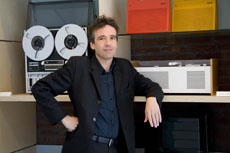Product use understanding and experience
Human-product interaction deals with the way in which we perceive, understand, use and experience products. This interaction is substantiated by our sensory, cognitive and motor systems. In order to understand how we interact with products, knowledge of these systems and how they limit, enable or facilitate interaction is essential. Our knowledge and insights come mainly from the human sciences. In this course, relevant knowledge and insights will be addressed in a thematic approach. Themes include: usecues, emotion, sound, cognitive fixation, touch, safety and risk awareness, discomfort, visual aesthetics, multimodal experience and inclusive design.
Vision in Product design (ViP approach)
Together with an external partner, a design assignment will be defined. Previous partners in ViP courses were Oc´e, city council of Amsterdam, Kessels/Kramer, Procter & Gamble, and KLM inflight services. By following the various stages of the ViP approach, each student will develop a personal and well-founded concept design that is clearly human-product interaction oriented.
This elective aims to familiarize students with the design approach Vision in Product Design (ViP). ViP is an approach based on the human-product relationship within its context. A crucial step in the approach is the design of a vision on this interaction. The approach draws heavily on the designer’s personality and his/her capacity for conceptual thinking. There is also a good deal of room in this approach for intuition and experimental perspectives. This course is meant for students who feel there must be alternatives to the regular ID design method and are considering to use the ViP approach in their final project.
Reflection on designing
By designing products for people and putting them in the world, designers have a big impact on our environment, behaviour and well-being. This course is designed to stimulate a critical reflection on this societal role of the designer and the student’s own design process. This is achieved by presenting students with ethical, philosophical and societal ideas about design and showing them how creators in related disciplines, such as architects, graphic designers, photographers and artists, approach their work and the impact it has.




